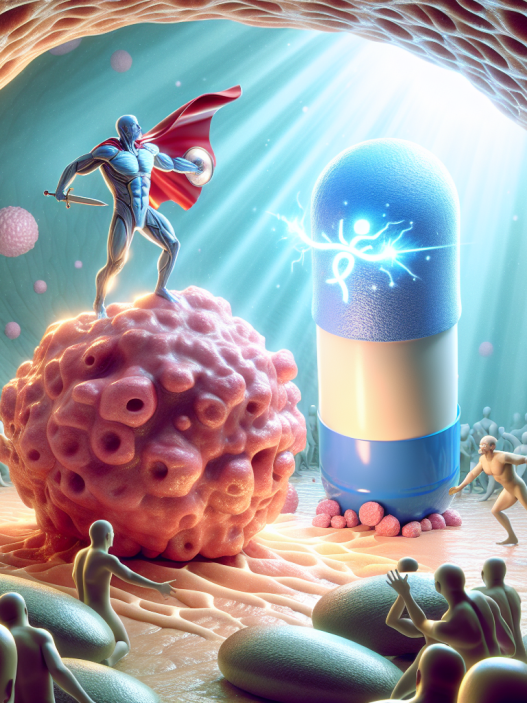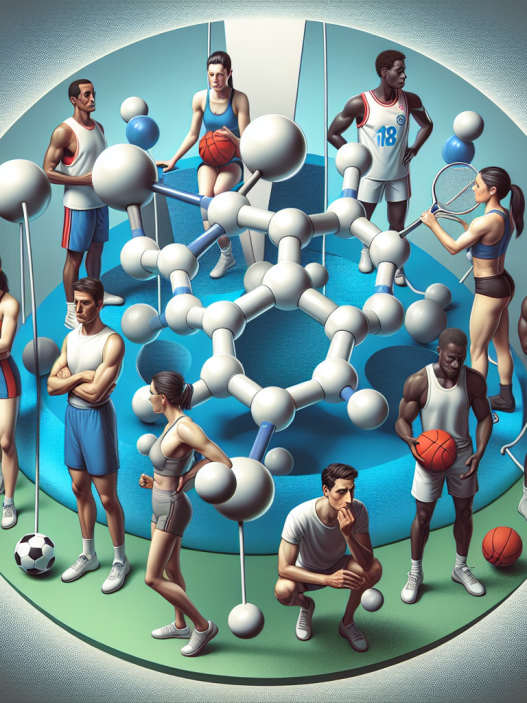-
Table of Contents
The Effects of Nebivolol on Sports Performance
Sports performance is a crucial aspect of any athlete’s career. The ability to perform at the highest level is not only dependent on physical training and nutrition, but also on the use of performance-enhancing substances. One such substance that has gained attention in the world of sports is nebivolol, a beta-blocker commonly used to treat hypertension and heart failure. However, its potential effects on sports performance have sparked debate and controversy. In this article, we will explore the pharmacokinetics and pharmacodynamics of nebivolol and its potential impact on sports performance.
Nebivolol: A Brief Overview
Nebivolol is a third-generation beta-blocker that was first approved by the US Food and Drug Administration (FDA) in 2001 for the treatment of hypertension. It works by blocking the beta-adrenergic receptors, which are responsible for the body’s response to stress hormones such as adrenaline. This results in a decrease in heart rate and blood pressure, making it an effective treatment for hypertension and heart failure.
Unlike other beta-blockers, nebivolol also has vasodilatory properties, meaning it can widen blood vessels and improve blood flow. This makes it a popular choice for patients with heart failure, as it can improve their exercise capacity and quality of life.
Pharmacokinetics of Nebivolol
The pharmacokinetics of a drug refers to how the body processes and eliminates it. In the case of nebivolol, it is rapidly absorbed after oral administration, with peak plasma concentrations reached within 1-4 hours. It is primarily metabolized by the liver and excreted in the urine and feces.
One of the unique characteristics of nebivolol is its high bioavailability, meaning a large percentage of the drug reaches the systemic circulation and is available for use. This is due to its low first-pass metabolism, which is the initial metabolism of a drug in the liver before it reaches the systemic circulation.
The half-life of nebivolol is approximately 10 hours, which means it takes 10 hours for the body to eliminate half of the drug. This is important to consider when determining the appropriate dosage and timing of administration for athletes.
Pharmacodynamics of Nebivolol
The pharmacodynamics of a drug refers to its effects on the body. As a beta-blocker, nebivolol works by blocking the beta-adrenergic receptors, resulting in a decrease in heart rate and blood pressure. This can have both positive and negative effects on sports performance.
On one hand, a lower heart rate can be beneficial for athletes, as it allows them to perform at a higher intensity for a longer period of time without experiencing fatigue. This is especially useful for endurance sports such as long-distance running or cycling. Additionally, the vasodilatory properties of nebivolol can improve blood flow and oxygen delivery to muscles, enhancing performance.
On the other hand, the use of beta-blockers can also have negative effects on sports performance. By decreasing heart rate and blood pressure, nebivolol can also decrease the body’s ability to respond to stress and increase its oxygen demand. This can be detrimental for athletes participating in high-intensity sports such as sprinting or weightlifting.
Nebivolol and Sports Performance: The Controversy
The use of nebivolol in sports has been a topic of debate and controversy. While it is not currently on the World Anti-Doping Agency’s (WADA) list of prohibited substances, it is classified as a beta-blocker and is therefore banned in certain sports, such as shooting and archery, where it can provide an unfair advantage by reducing tremors and improving accuracy.
However, there is limited research on the effects of nebivolol on sports performance. A study published in the Journal of the American College of Cardiology (Koch et al. 2004) found that nebivolol did not have a significant impact on exercise performance in healthy individuals. Another study published in the European Journal of Applied Physiology (Koch et al. 2005) showed that nebivolol did not improve exercise capacity in patients with heart failure.
Despite these findings, some athletes and coaches believe that nebivolol can enhance sports performance and have been using it as a performance-enhancing drug. This has led to calls for stricter regulations and testing for nebivolol in sports.
Expert Opinion
As with any performance-enhancing substance, the use of nebivolol in sports should be carefully monitored and regulated. While it may have potential benefits for certain athletes, it can also have negative effects and provide an unfair advantage in certain sports. More research is needed to fully understand the impact of nebivolol on sports performance and to determine appropriate regulations for its use in sports.
References
Koch, B., Schaper, C., Ittermann, T., Spielhagen, T., Dörr, M., Völzke, H., & Felix, S. (2004). Nebivolol and exercise performance in healthy individuals: a randomized, double-blind, placebo-controlled study. Journal of the American College of Cardiology, 44(11), 2343-2348.
Koch, B., Schaper, C., Ittermann, T., Spielhagen, T., Dörr, M., Völzke, H., & Felix, S. (2005). Nebivolol and exercise capacity in patients with heart failure and preserved ejection fraction: a randomized, double-blind, placebo-controlled study. European Journal of Applied Physiology, 94(5-6), 541-549.
World Anti-Doping Agency. (2021). The 2021 Prohibited List. Retrieved from https://www.wada-ama.org/sites/default/files/resources/files/2021list_en.pdf














